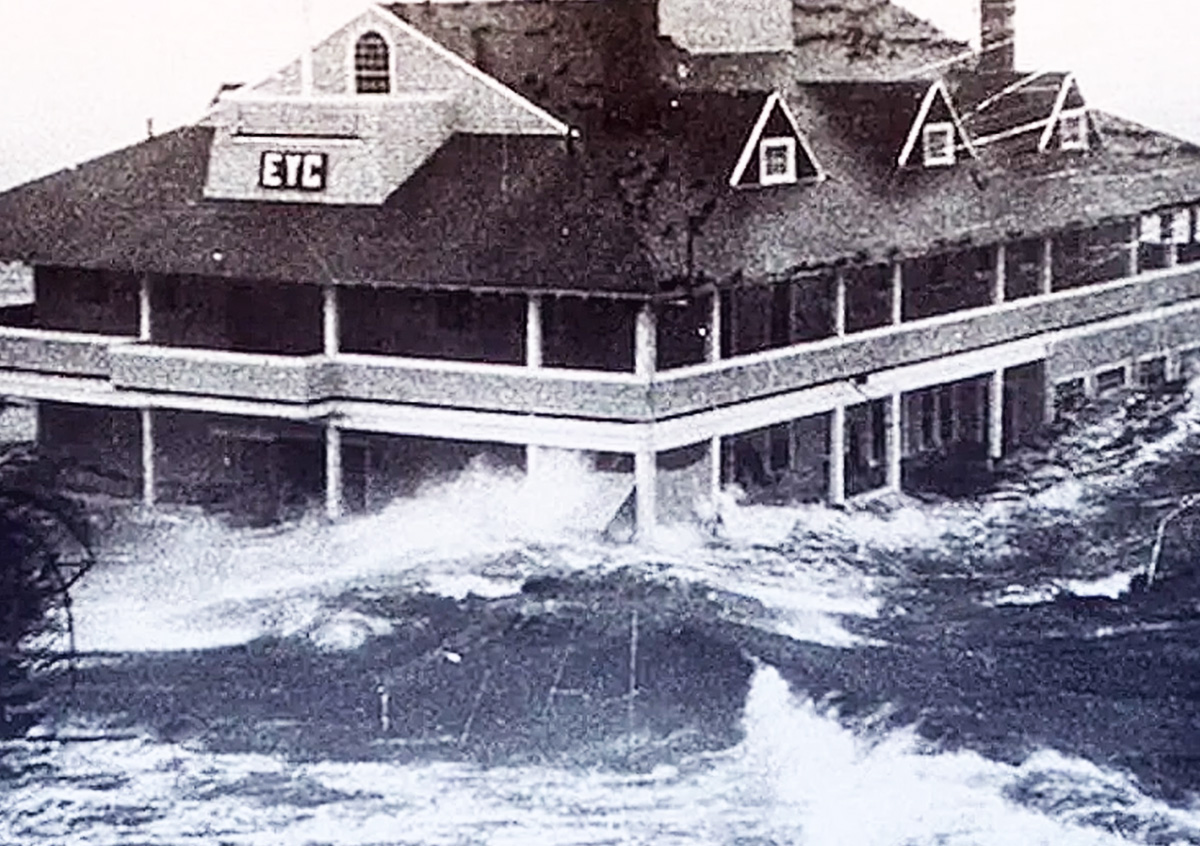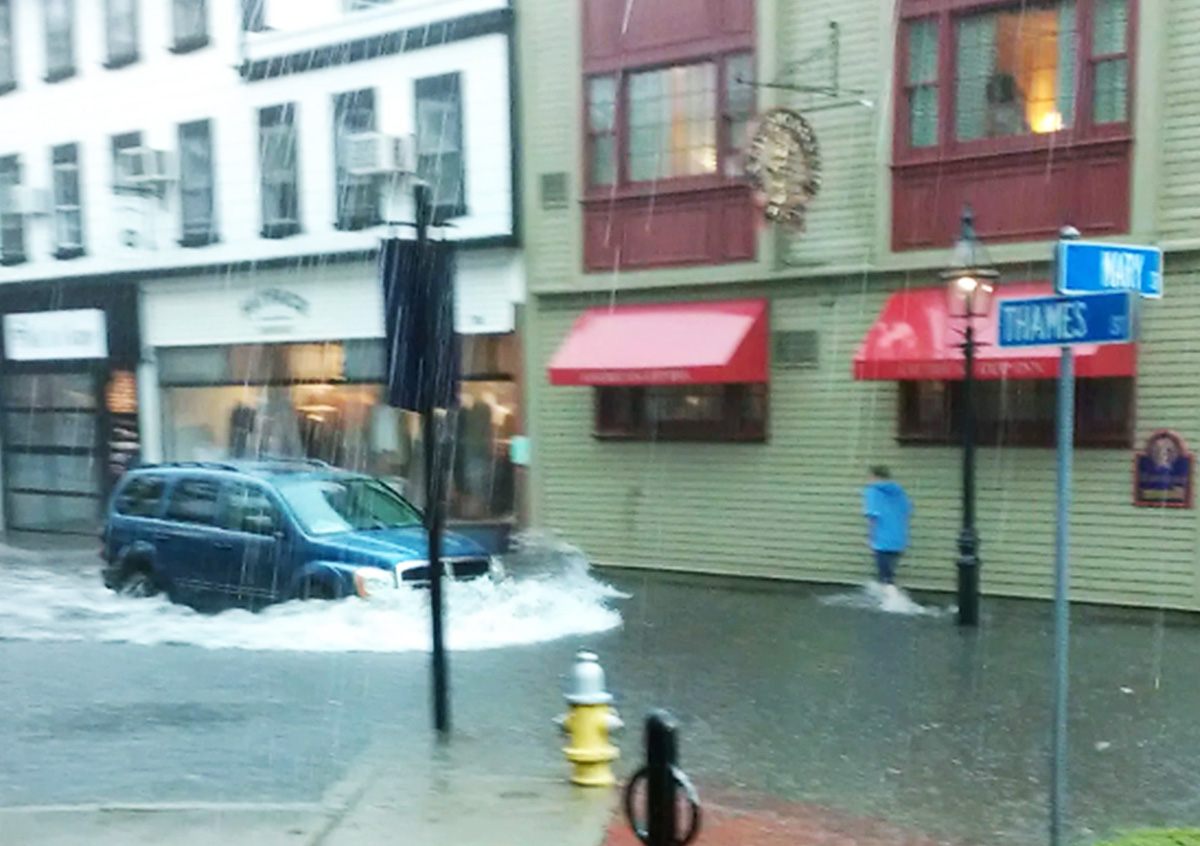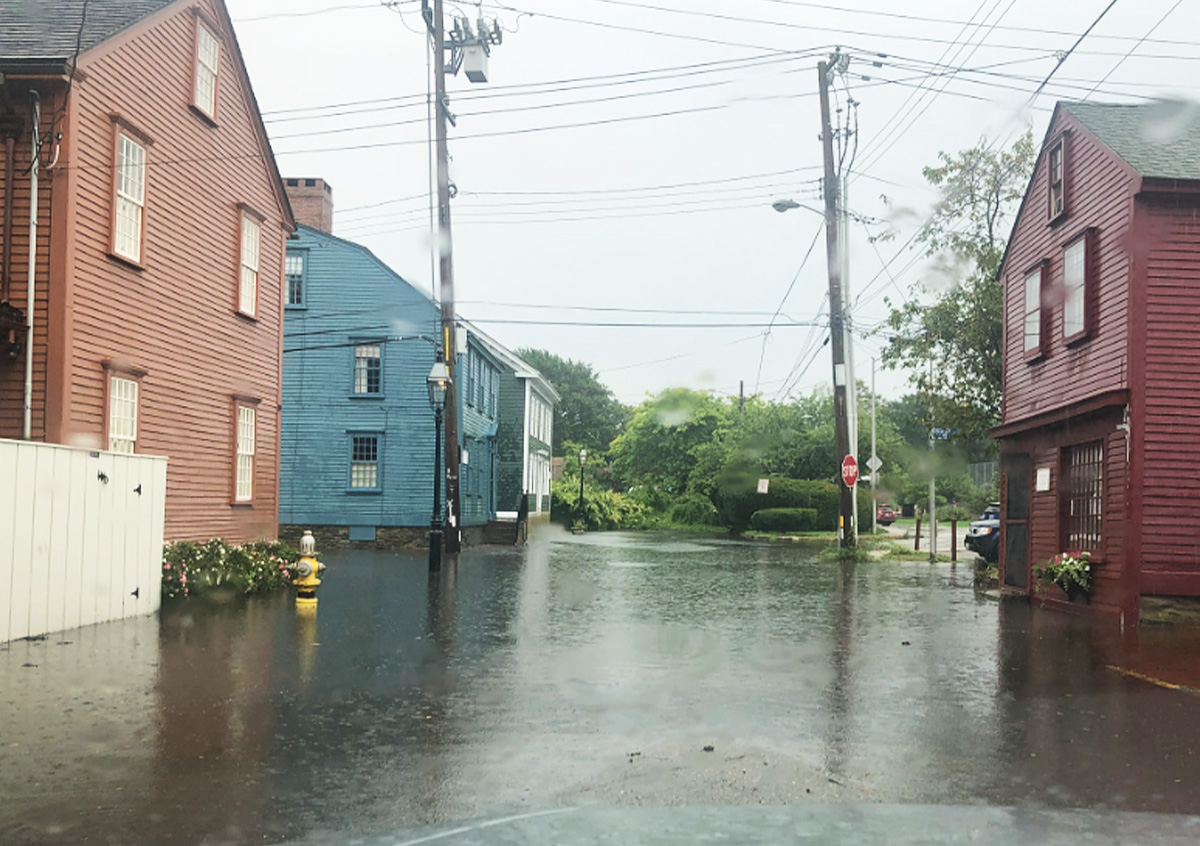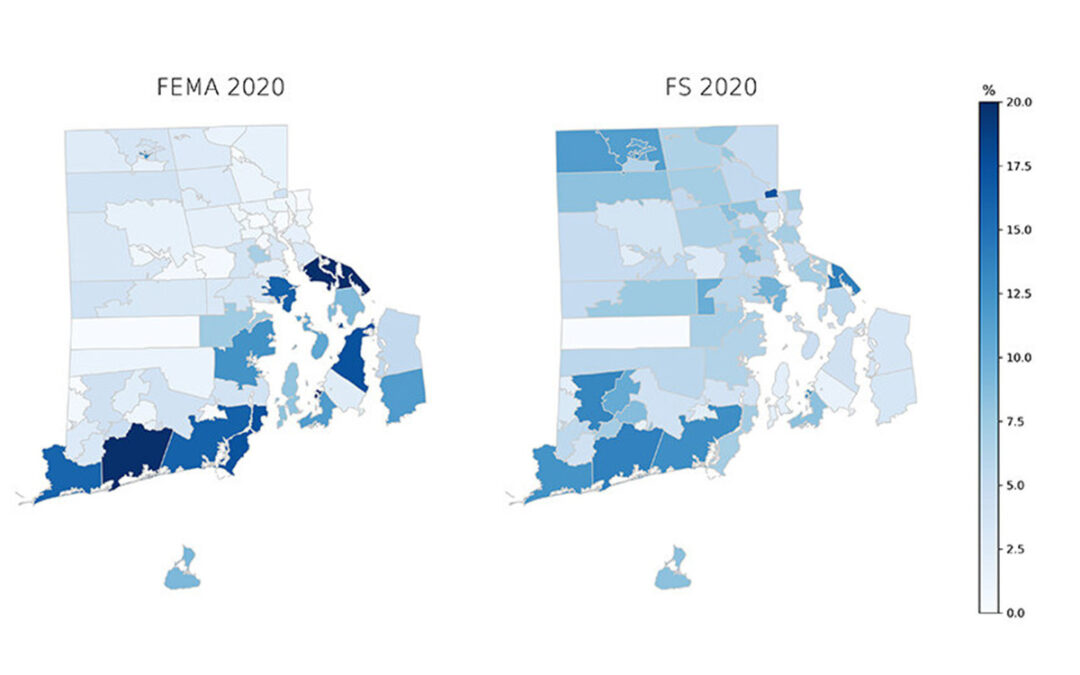Rhode Island is called the “Ocean State,” and is no stranger to the ebb and flow of the waters. But as climate change intensifies, coastal communities are having to confront a difficult choice: fight or retreat. The concept of “strategic retreat,” which is the planned relocation of people and infrastructure from flood-prone areas, is gaining traction, but it’s not a new idea on the Ocean State’s shores.
Historians point to the Great New England Hurricane of 1938 as a turning point. This ferocious storm ravaged Rhode Island, claiming lives, wiping out barrier beaches, and inundating Providence with a 17-foot storm surge. The devastation sparked the first whispers of retreat. The coastal town of Napatree Point, decimated by the storm, saw its remaining residents relocated to higher ground. It was a small-scale, unplanned retreat, but it foreshadowed future challenges.

Hurricane Carol in 1953 ( Rhode Island)
In the post-war era, Rhode Island’s focus was on resilience, with seawalls and beach replenishment projects taking place in many coastal communities. But by the late 20th century, nature was pushing back. With coastal erosion intensifying, storms growing more frequent and fierce, and sea levels continually rising, new alternatives had to be considered. The idyllic shoreline became a battleground, with communities pouring millions into protecting their homes and businesses only to be overwhelmed by the power of ever-higher sea levels.
The 2010s proved to be a crucial political crucial turning point. Hurricane Sandy brought the new necessities of retreat into sharp focus. Homes were destroyed, entire neighborhoods flooded, and the financial costs through the Northeast were staggering. The realization dawned: simply building higher barriers along the shorelines wasn’t going to be enough.

Hurricane Sandy 2012 on Thames St. (Newport, Rhode Island)
In 2012, Rhode Island became the first state in the nation to officially embrace strategic retreat as a climate adaptation strategy. The 2018 “Resilient Rhody” plan included funding for buyouts of flood-prone properties and relocation assistance for vulnerable communities. But implementing retreat is complex. Emotions run high as residents grapple with leaving their homes and communities. The financial burdens of purchasing properties are significant, and questions about who bears the cost of retreat inevitably arise. The legal barriers are challenging, and navigating complex property rights adds another layer of difficulty. The flood prone areas are often turned into parks and other natural barriers to rising seas and flooding rivers.

2022 Flooding (Newport, Rhode Island)
Despite the challenges, Rhode Island’s retreat efforts are forging a path for other coastal communities. The Rhode Island Coastal Resources Management Council (CRMC) has taken a proactive approach, acquiring vulnerable properties and working with communities to develop relocation plans. In Charlestown, a coastal town facing chronic flooding, residents are collaborating with the CRMC to create a “resilient village” on higher ground.
The story of retreat in Rhode Island is not simply one of loss, but also of one of adaptation and resilience. It is about communities coming together to face a difficult reality and building structures that can thrive beyond the reach of future storms. As the waters rise, Rhode Island’s retreat becomes a national case study, demonstrating the innovation needed to navigate the challenges of a changing climate.

2024 Easton Beach Flooding (Newport, Rhode Island)
While the future remains uncertain, Rhode Island’s strategic retreat efforts offer a beacon of hope. By learning from the past, embracing collaborative solutions, and prioritizing equitable outcomes, the Ocean State is charting a course for a future where humans and the sea can coexist, even as the shoreline shifts.
Ross Cann, RA, AIA, LEED AP, is an author, historian, and practicing architect living and working in Newport, RI. He holds degrees with honor in Architecture from Yale, Cambridge, and Columbia Universities. He is a LEED Accredited Professional and has been trained and certified to handle issues of environmental sustainability.
At A4 Architecture + Planning we are expert at integrating building codes into our designs to provide safer and more long-lasting building solutions for our clients. If you are interested in learning more about what can do for you reach out to us at any time!
